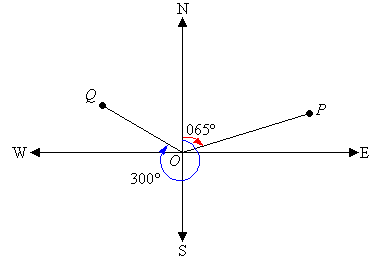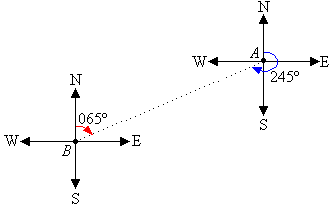First of all, take a look at this video below
Are you clear? Need more?
Let's us find out more information about bearings...
The true bearing to a point is the angle measured in degrees in a clockwise direction from the north line. We will refer to the true bearing simply as the bearing.

For example, the bearing of point P is 065º which is the number of degrees in the angle measured in a clockwise direction from the north line to the line joining the center of the compass at O with the point P (i.e. OP).
The bearing of point Q is 300º which is the number of degrees in the angle measured in a clockwise direction from the north line to the line joining the centre of the compass at O with the point Q (i.e. OQ).
Note:
The bearing of a point is the number of degrees in the angle measured in a clockwise direction from the north line to the line joining the center of the compass with the point.
A bearing is used to represent the direction of one point relative to another point.
For example, the bearing of A from B is 065º. The bearing of B from A is 245º.

Note:
- Three figures are used to give bearings.
- All bearings are measured in a horizontal plane.
Let's take a look at other video for your understanding















